Archaeology & Artefacts Uncovered
City Rail Link employed an archaeologist to document, and where appropriate preserve, archaeological finds found during the CRL construction.
In this section, we will be documenting those finds and detailing other aspects of our approach to heritage.
Albert Street fire bell tower remnants found
Unless you were around from the 1880's, you won't recognise the photo of the old Albert Street fire bell tower.
It was a big deal.
Fire bell tower on Albert Street (date unknown). Credit: Auckland Libraries Heritage Collections AWNS-19010815-11-5
Fire bell tower plan (1880). Credit: Auckland Libraries Heritage Collections Map 4759 - 725.19
This is believed to have been from that first station in Albert Street, circa 1880 - a brass bell 24" high and 24" in diameter. A newspaper report said the bell was imported from Sheffield in 1882 for the tower at Albert Street Fire Station and later used at Northcote fire station. (Photo credit: Collection of Auckland Museum Tamaki Paenga Hira, col.2935)
Contractors at the mid-town Te Waihorotiu Station site uncovered concrete foundations and timber footings used to support the landmark wooden fire bell tower.
In its heyday, watchmen had to huff-and-puff their way up five sets of steep stairs to reach the tower’s lookout perched almost 23 metres – roughly the length of a cricket pitch - over a town built mainly of wood and brick and vulnerable to the threat of fire.
Built in the early 1880s, the tower was topped by a heavy bell known as “Big Ben”. There was no electricity at the time and watchmen had to use hydraulics to ring “Big Ben” and raise the alarm. It could be heard 11 kilometres away - providing it was a still day with no wind. The number of the bell’s gongs indicated the location of a fire.
“Big Ben” and the tower were decommissioned in 1902 when the city’s main fire station moved to opposite its present site in Pitt Street.
The tower’s foundations were exposed when our Link Alliance contractors were excavating earth along Albert Street.
WOOD: The kauri used to support the tower
DONATION: Link Alliance donated the tower segments to the Auckland Fire Brigades Museum & Historical Society – from left: Dave Neil (Auckland Fire Brigades Museum & Historical Society), Jason Haggerty (Link Alliance), Matt Cheyne (Link Alliance), Matt Sinclair (Link Alliance), Vaughan Mackereth (Fire & Emergency NZ), Hunter White (Link Alliance), Murray Binning (Auckland Fire Brigades Museum & Historical Society)
CRL’s Chief Executive, Dr Sean Sweeney, says the city’s given up another of its buried secrets – an archaeological snapshot of the past and a reminder of what it was like to live without all the mod cons we take for granted today.
Matt Sinclair, Te Waihorotiu Station Manager for the Link Alliance says they were in pretty good nick considering they had been underground almost 150 years. The wood has been identified as kauri and some of the segments are still lock together in a set.
Old well found
Excavation of virgin clay on the corner of Wellesley Street and Mayoral Drive by Link Alliance construction crew revealed an in situ unlined well in May 2020.
Its location indicates that it pre-dates the Salvation Army Hall that was nearby. The well was 1.3m below the modern road surface, 1.22m in length x 1.12m in diameter, and depth of 0.5m was dug by hand.
The well was cut into natural clay.
Bricks from old hall
Around the Te Waihorotiu Station work, in the vicinity of the corner of Wellesley Street and Mayoral Drive, crews uncovered remains of the old Salvation Army Hall that was there.
Uncovered were several brick foundations walls, two drains and a brick pile.
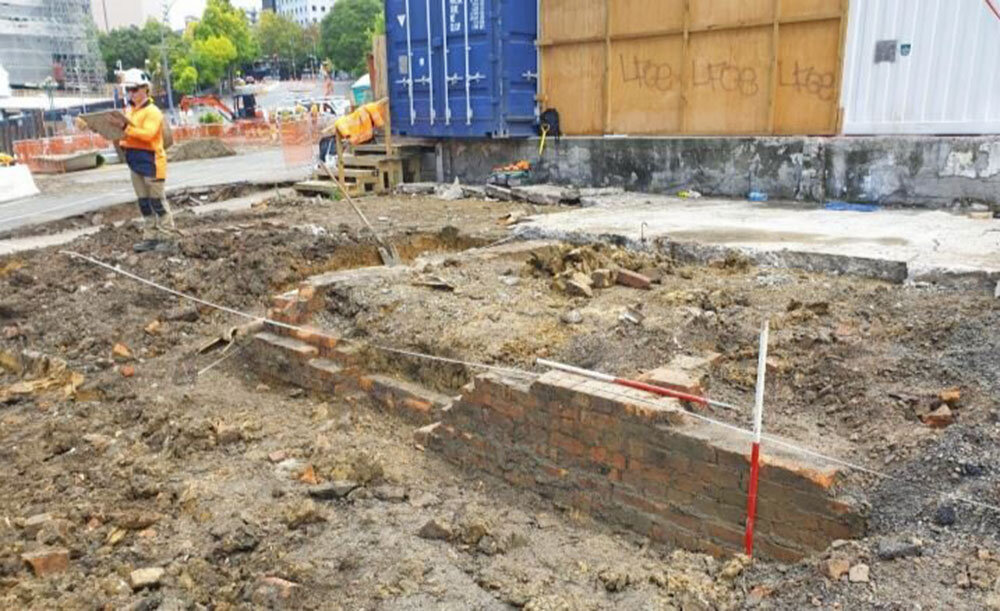
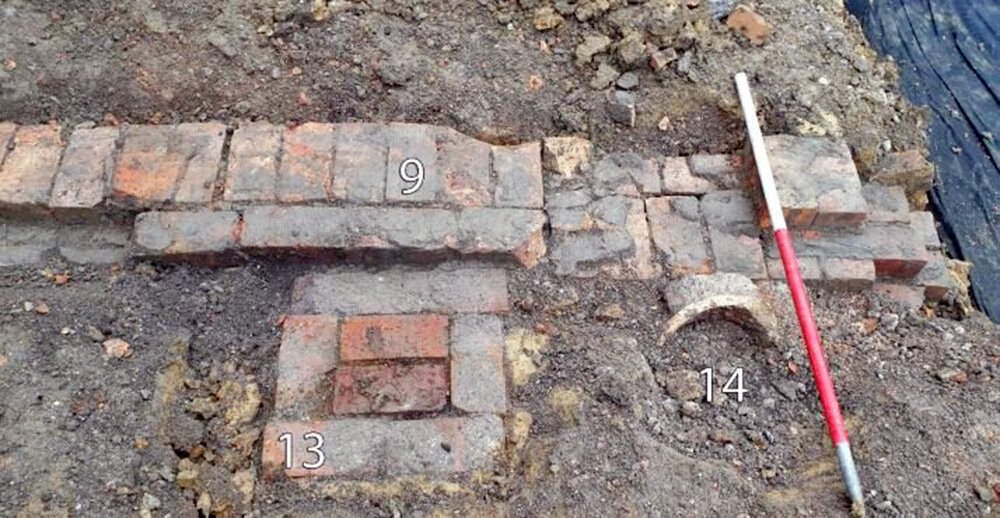
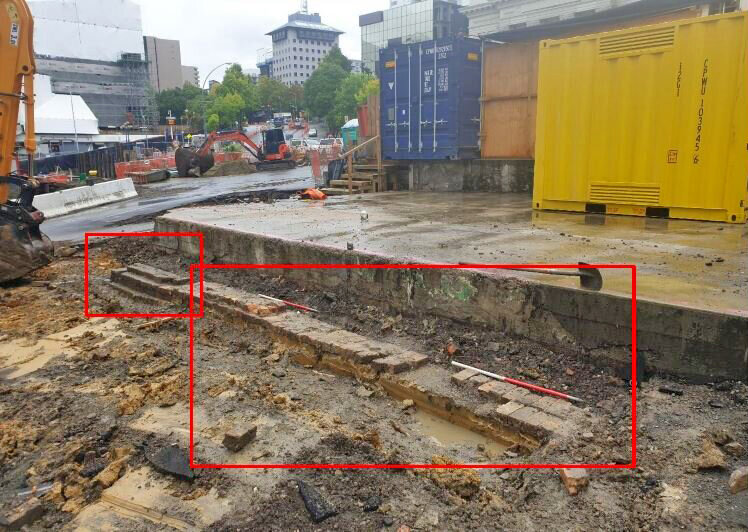
LOCATION: Historic photo from the area, Looking north along Greys Avenue showing the Salvation Army Congress Hall (centre left), Auckland Town Hall (extreme left). Photo credit: Auckland Libraries Heritage Collections 4-2317
Old boiler found
The Link Alliance teams working on the construction of the new Te Waihorotiu Station found this old boiler in May 2020.
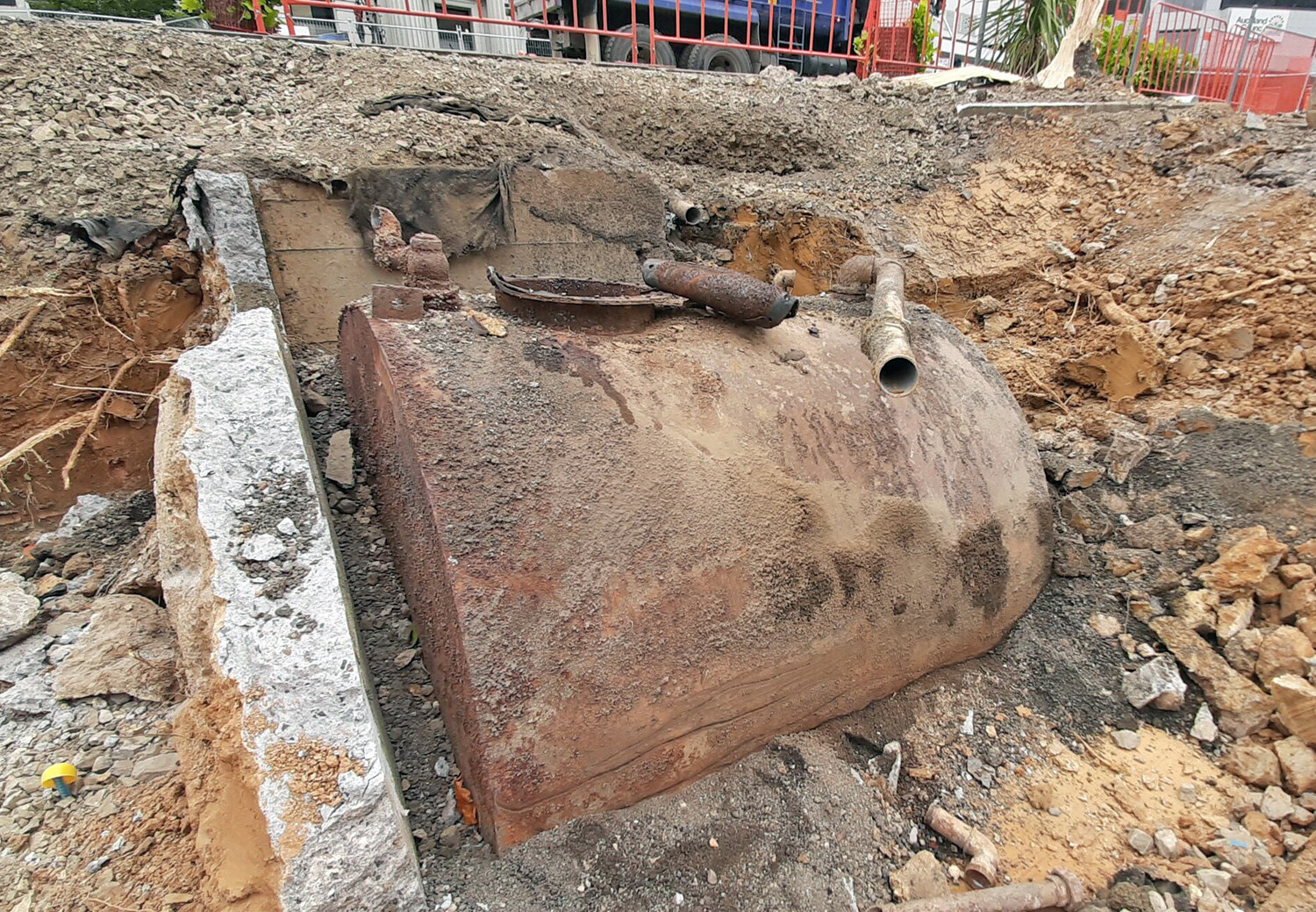
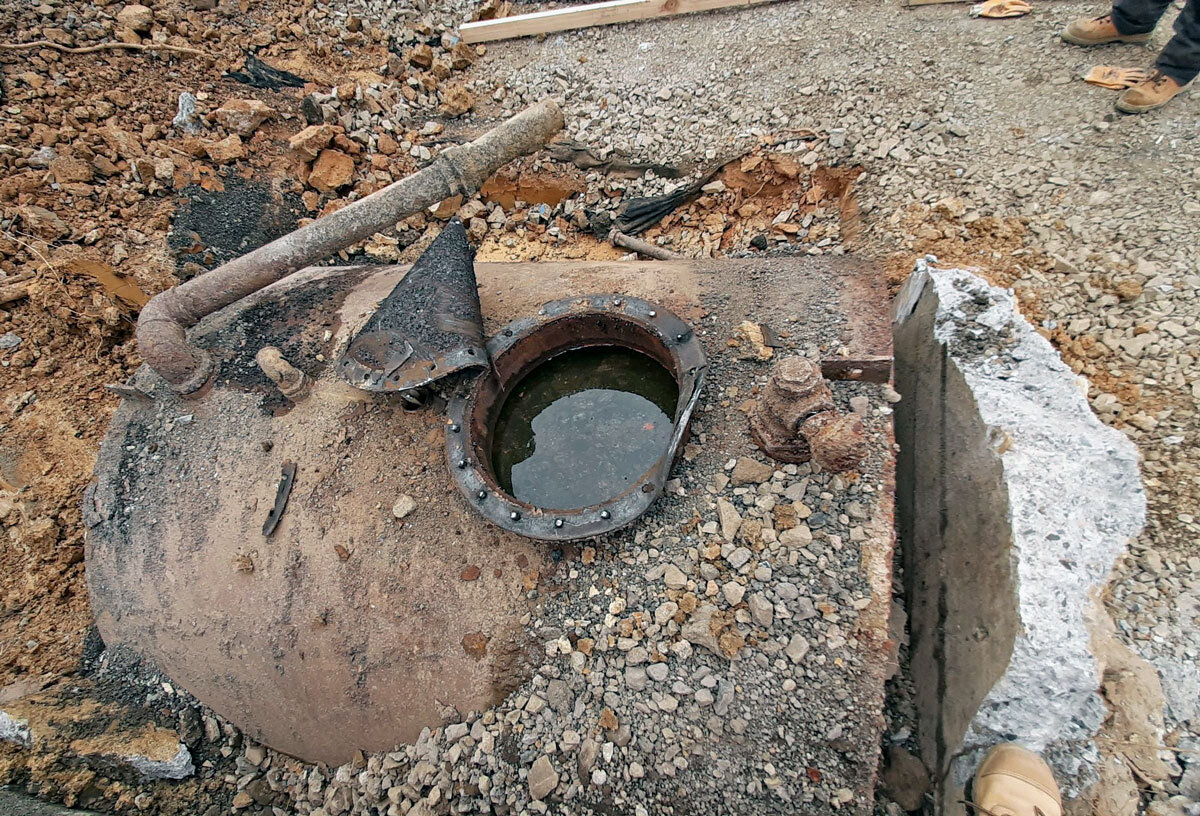
The boiler was situated half buried below the surface surrounded by a concrete wall that was made up of layers. It was 170cm wide, 180cm long and 170cm high, and found with contaminated materials inside.
What could it have been used for? No-one is quite sure yet. The location was around 4-10 Mayoral Drive, within the area of the old carpark (see photo).
Auckland’s old seawall uncovered
In May 2020, during excavations in Lower Queen Street, our contractors Downer NZ Soletanche Bachy started uncovering the old Customs Street seawall that dates back to circa 1860s.
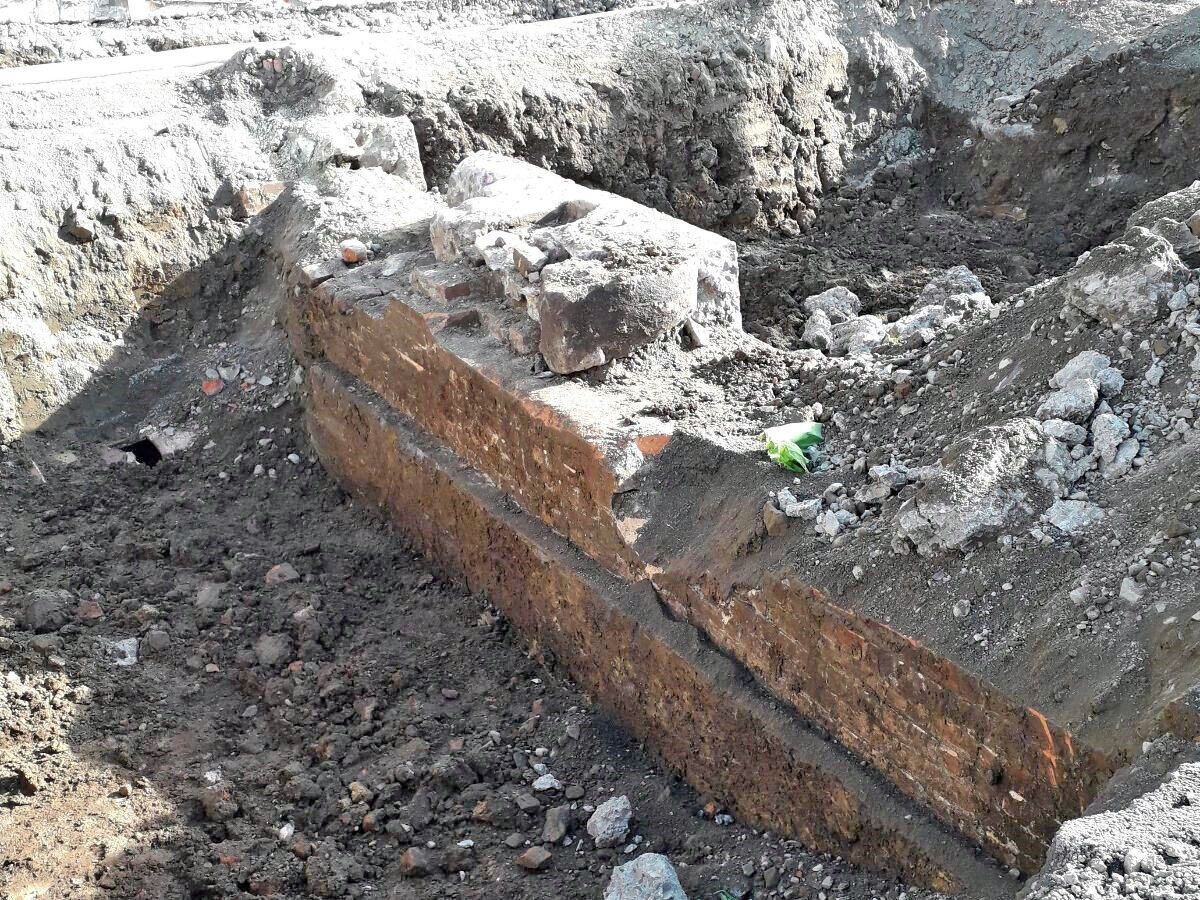
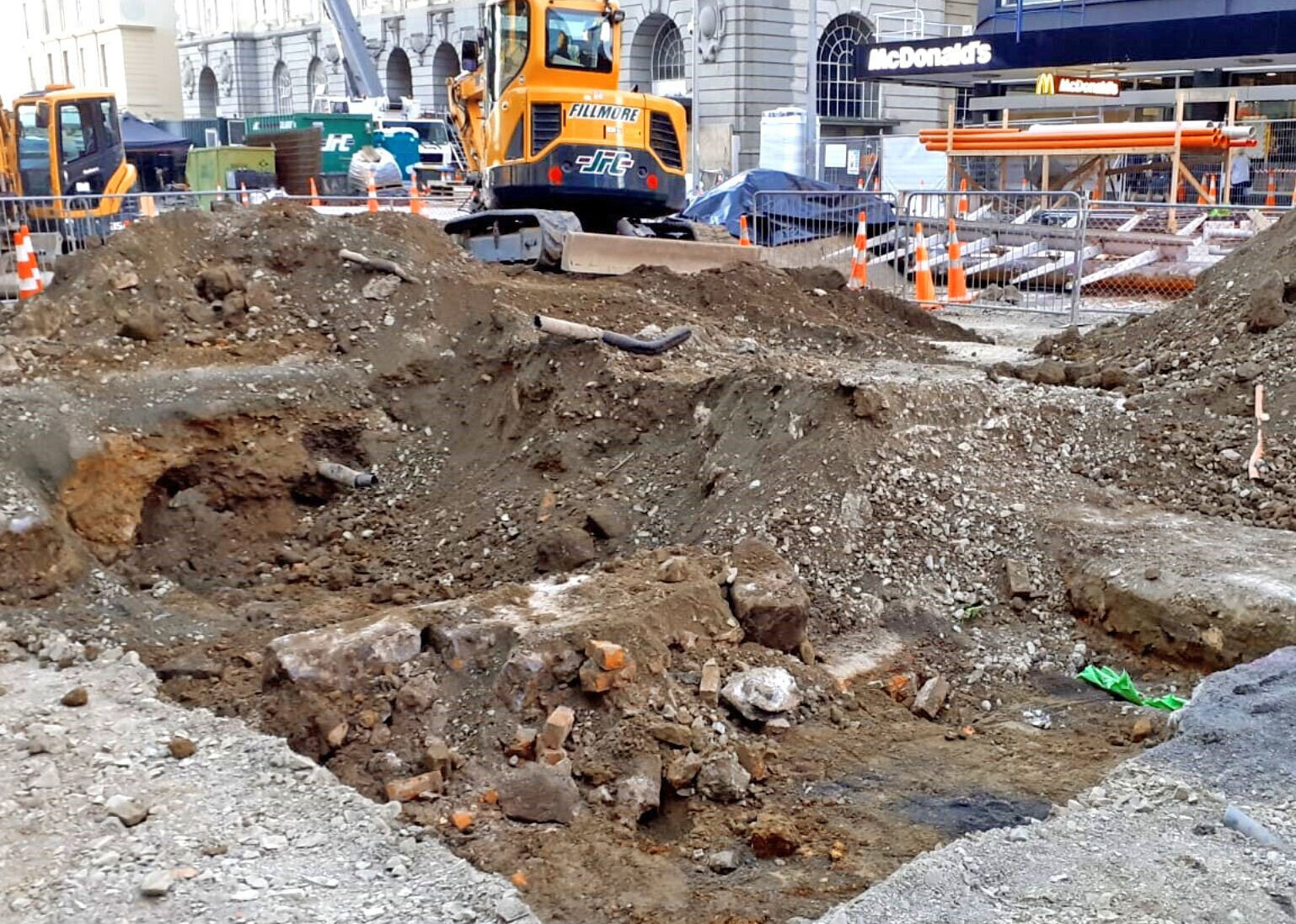
The discovery is recorded as part of our Heritage NZ requirements.
“Ancient” tree fragments found in Mt Eden
In March 2019, Jeffie, the CRL machine tunneling around Eden Terrace/Mt Eden encountered what appeared to be an ‘ancient’ tree, more than 20,000 years old.
It was found at 291m at 15m deep as we entered the basalt area, which indicated that it had been knocked over at the edge of a basalt flow and smothered by the lava rather than catch on fire.
It was found under the basalt rather than in it. The tree sections resembled much more wood than petrified rock.
Radiocarbon dating has estimated that fragments are 28,000 (28 thousand) years old – a time when long extinct woolly mammoths and sabre tooth tigers still roamed the planet.
The age of the fragments was confirmed after radiocarbon analysis by scientists and researchers at DEVORA (DEtermining VOlcanic Risk in Auckland).
“This tree is an exciting find for volcanologists because it confirms that Maungawhau/Mt Eden erupted about 28,000 years ago,” says DEVORA Volcanologist Elaine Smid. “We have used other techniques to date this eruption, with similar findings. This new radiocarbon result removes any lingering doubts about the age of Maungawhau/Mt Eden.”
Auckland 28,000 years ago was very different place. It was untouched by humans, wildlife were mainly birds, and the land was covered by hardwood forest and shrubs. Prominent volcanic landmarks like Rangitoto, Motukorea/Browns Island, Maungarei/Mt Wellington and the Panmure Basin did not exist. Beyond Auckland, Ngāuruhoe in the central North Island did not exist either. The earth was in the throes of an Ice Age – temperatures were colder, sea levels lower, and woolly mammoths and sabre tooth tigers still survived.
The tree’s discovery was made during critical works for CRL – excavation of the new stormwater drain was necessary for the project’s tunnels to connect with Auckland’s existing rail network at Mt Eden.
“It’s fantastic that a project focused firmly on Auckland’s future growth as an international city has been able to unlock a scientific treasure from a very distant past and help us learn more about the place so many New Zealanders call home,” says City Rail Link Ltd Chief Executive, Dr Sean Sweeney.
Iwi involved with CRL describe the discovery as an enlightening one connecting two significant events: the eruption and creation of Maungawhau and construction of the nearby City Rail Link
“Both events in their own way are creating dramatic changes to the landscape of Tāmaki Makaurau and the way we interact with it for generations to come,” says Gabriel Kirkwood, Kaitiaki for Ngāi Tai ki Tāmaki – Taiaomaurikura. “The research undertaken into the age of the tree provides a valuable insight into the history of Tāmaki Makaurau and the scientific contribution to this knowledge will not be forgotten.”
While the age of the tree is confirmed, scientists are unsure of its fate at the time Maungawhau/Mt Eden erupted.
Shock waves from the eruption may have knocked over the tree, or it may have already fallen a short time before the eruption into a pond or swamp where it was protected from being burnt by spreading lava.
“The wood was nicely preserved. It doesn’t seem to have burned up and turned to charcoal, which we would expect if the tree was knocked over by the lava flow. Either way, the radiocarbon date for the wood gives us a really good idea of when Maungawhau/Mt Eden erupted,” Ms Smid says.
Even today, 28,000 years on, the tree fragments recovered from the CRL site still have a scientific role.
“DEVORA scientists use volcano ages to identify eruption patterns and to better understand how the Auckland Volcanic Field has behaved in the past – it’d like a big puzzle,” says Ms Smid. “This age is another piece in that puzzle, now slotted firmly into place. Every piece we add tells us a little more about how the volcanic field may behave in the future, making Auckland a safer place.”
NOTE: DEtermining VOlcanic Risk in Auckland (DEVORA) is a transdisciplinary, multi-agency, collaborative research programme aimed at improving assessment of volcanic hazard and risk in the Auckland metropolitan area. It is co-led by the University of Auckland and GNS Science and supported by the Earthquake Commission and Auckland Council. (http://www.devora.org.nz/)
Excavation exposes Chief Post Office building foundations
Excavation work in July 2018 exposed the existing foundations of Waitematā Station’s 106-year-old Chief Post Office (CPO) building.
Records are being taken for heritage and posterity reasons before the old foundations are removed and the excavation progresses deeper underground.
The building is now being supported by a new underpinning structure on new foundations.
In August 2018, while excavating the northern trench, contractors Downer NZ and Soletanche Bachy JV found an old pile dated 08/10/1909.
Wharf piles found
In September 2018, excavation works within Lower Queen Street uncovered remnant piles and basalt blocks from the original Queen Street wharf dating to the 1850s.
Multiple wharf piles, some of which had survived in-situ, and one crossbeam were excavated from beneath Lower Queen Street. The depth at which they were exposed varied from between 1-4m below the existing modern ground surface. Some of the piles recovered showed a tapered point that retained the scallop marks produced by shaping with an axe.
Several basalt (bluestone) rocks were also identified to the west of the easternmost line of piles. Only one of these appeared to have remained in-situ. The stone had been shaped into rectangular blocks and the side that was exposed to the ocean was clear through the covering of oyster shells.
In addition, a small assemblage of artefacts comprising two leather shoes, two stoneware bottles, a short length of rope and a wrought iron hand shovel were also recovered from the reclamation fill surrounding the wharf piles.
Old tram tracks and wires found
In January 2016, a section of Auckland's old tramway was revealed during CRL construction work in Victoria Street West as shown in images below.
Working through layers of power and telecommunications services, construction workers came across an unexpected piece of Auckland’s transport history – a section of the city’s old tramway network in Victoria Street West that connected back to Customs Street.
“These services are always very dense at the corners of intersections where most are located, so you can never be certain what you’ll find underground,” says Mark Anderson, utilities engineer with the Connectus Consortium, undertaking the work.
“Even though we used ground penetrating radar and searched through the city’s service records, we didn’t expect to uncover the old tramway network.”
Auckland's electric trams ran from 1902 to 1956. Running from downtown at the Waitemata Harbour and across to Onehunga on the Manukau Harbour, they were then the world's only coast to coast tramway system.
Post-WWII, the decision was made not to put more money into the tram network. Instead Auckland was to follow Los Angeles by being dominated by motorways and the decision made to rip up the tramlines and use buses.
What we also found under the streets
During the early reclamation of the Waitemata Harbour, household rubbish and building debris were thrown in (along with the fill from the 1859 demolition of nearby Smales Point).
This household rubbish is the likely source of bottles uncovered during the excavation.
These historical artefacts were found in May 2017 behind Waitematā Station (Britomart) -the former Chief Post Office building. The artefacts included three partial/complete glass bottles and two partial stoneware bottles from an area of homogenous mixed grey clay fill 4m below the existing road level. The artefacts were not grouped together but were within the same general area.
The five vessels pictured above are (left to right):
The top of a two-toned salt-glazed stoneware beer bottle from the 19th century. It is a two-tone salt glazed stoneware beer bottle with no embossing evident. It's a typical 19th century historic bottle.
A topless aerated stoneware water bottle with a dark blown glaze, embossed with the words 'Victorian Selters Water Balloon' surrounding the monogram 'JM.' The Ballan mineral water spring located in Ballan, Victoria, Australia, appears to have been first identified during the early 19th century. The Victorian Selters Water was reportedly introduced to the Australian public by Messrs. Joske and Morton during the summer of 1867-68.
A green 'Bordeaux' shape wine bottle, commonly found on 19th to early 20th century historic sites in New Zealand.
An aqua Lea & Perrins Worcestershire sauce bottle with glass stopper and cork surround intact. The lip is applied (not machineade) and the base embossed with the maker's mark 'A.C.B & Co.' Lea & Perrins was first produced in about 1840 and this particular bottle dates from the c1850s-1877.
A topless aqua 'Hamilton Torpedo' style aerated water bottle. Hamilton torpedo bottles were first patented by William Hamilton in 1814. Hamilton designed the torpedo patent to solve the problem of the corks in aerated water bottles drying out and shrinking which allowed the gas inside the bottle to escape.
With the new design, the bottles could be laid only on their sides and the corks subsequently remained wet- sealing in the gas that kept water aerated. Torpedo patent bottles continued to be manufactured until c.1870s when new aerated water bottles arrived on the market. These could be successfully stored upright while retaining their effervescence.
The Hamilton Torpedo bottle is embossed with J. Grey Auckland. John Grey bought the aerated water manufacturing company at Eden Crescent, Auckland from Charles Sutton in 1874. In 1880, Grey's sons joined the business and the trading name was changed to John Grey & Sons. This bottle therefore dates to between 1874 and 1880.
Similar bottles also found
In November 2017, similar bottles were recovered by contractors from reclamation fill beneath the Chief Post Office during excavation for the installation of diaphragm wall.
The artefacts were found at a depth of 2m below the existing ground level.
The artefacts comprised nine bottles, none of which are complete.
Eight of the bottles have been identified as aerated water bottles and the remaining one was unable to be confidently identified.
All of the bottles date to the late 19th century, with most falling into the decade of the 1880s - which fits well with the date of reclamation of this area being 1879-1886.
Stoneware and earthenware ceramic
In April 2017, two stoneware preserve bottles and a sherd of earthenware ceramic from an Ashet or serving platter with the decorative Willow Pattern design were recovered from a services trench dug in Galway Street.
These types of items commonly date back to the mid to late 1800s and are estimated to be at least 150 years old.
Horse shoe and ginger bottle
Workers installing a manhole and back flow valve as part of utility works on Fort Street found a large rear horse shoe and this hand-thrown stoneware ginger bottle about three metres underground.
Because the maker’s mark – Fowler – was stamped on the bottle, the project archaeologist was able to trace the artefact back to Enoch Fowler, who arrived in Sydney in 1836 as a free settler from Tyrone, Ireland, and made ginger beer bottles and kitchenware.
Plates in Mount Eden
In early 2020, Link Alliance construction team working around the Maungawhau Station (Mt Eden) uncovered some old treasures within the remaining topsoil uphill from 6 Flower Street.
This stoneware lid is marked by ‘David Storer & Sons Glasgow’ with its company logo, a bell. The firm made oils, paints and varnishes from the 1870s until 1887, when the company went bankrupt. The product may have been used on the exterior of at old cottage that was at 6 Flower Street or on a piece of furniture inside it.
The Asiatic Pheasant banded ceramic plate banded blue willow is probably from the late 1800s. Link Alliance has employed an archaeologist to document and, where appropriate, preserve archaeological items found during construction.
Found around the Chief Post Office construction site
Downer NZ and Soletanche Bachy JV workers Raj and Noel. In September 2018, they uncovered a complete stoneware mineral water bottle from the 1880s. It was produced in the west German Duchy of Nassau, famous for its mineral springs. Ray and Noel found it in reclamation fill, about five metres under modern ground level.
19th century artefacts found
Fourteen historical artefacts have been recovered during CRL excavations under Lower Queen Street and Waitematā Station (Britomart)’ s Chief Post Office (CPO) building around September 2018.
A French stoneware ink bottle was found four metres beneath the ground within the footprint of CRL’s northern tunnel alignment under the CPO. A cache of other artefacts, comprising stoneware, glass, metal and leather, were also found in reclamation fill about three to four metres under Lower Queen Street in front of the CPO.
The French bottle, produced by Antoine & Sons, was a particularly exciting find. The Paris-based House of Antoine manufactured writing inks from 1840. They were best known as makers of copying ink, which was first marketed as ‘Encres Japonaise’ in 1853. An advertisement in the Southern Cross newspaper on 14 July 1874 states that 12 cases of various inks, including ‘Antoine’s Violette Noire French Copying Ink’, had just arrived in New Zealand.
Other interesting finds included a large and complete salt-glazed stoneware master ink bottle with pouring spout, an intact blacking jar for leather polish, a Hogben patent aerated water bottle and a man’s leather shoe.
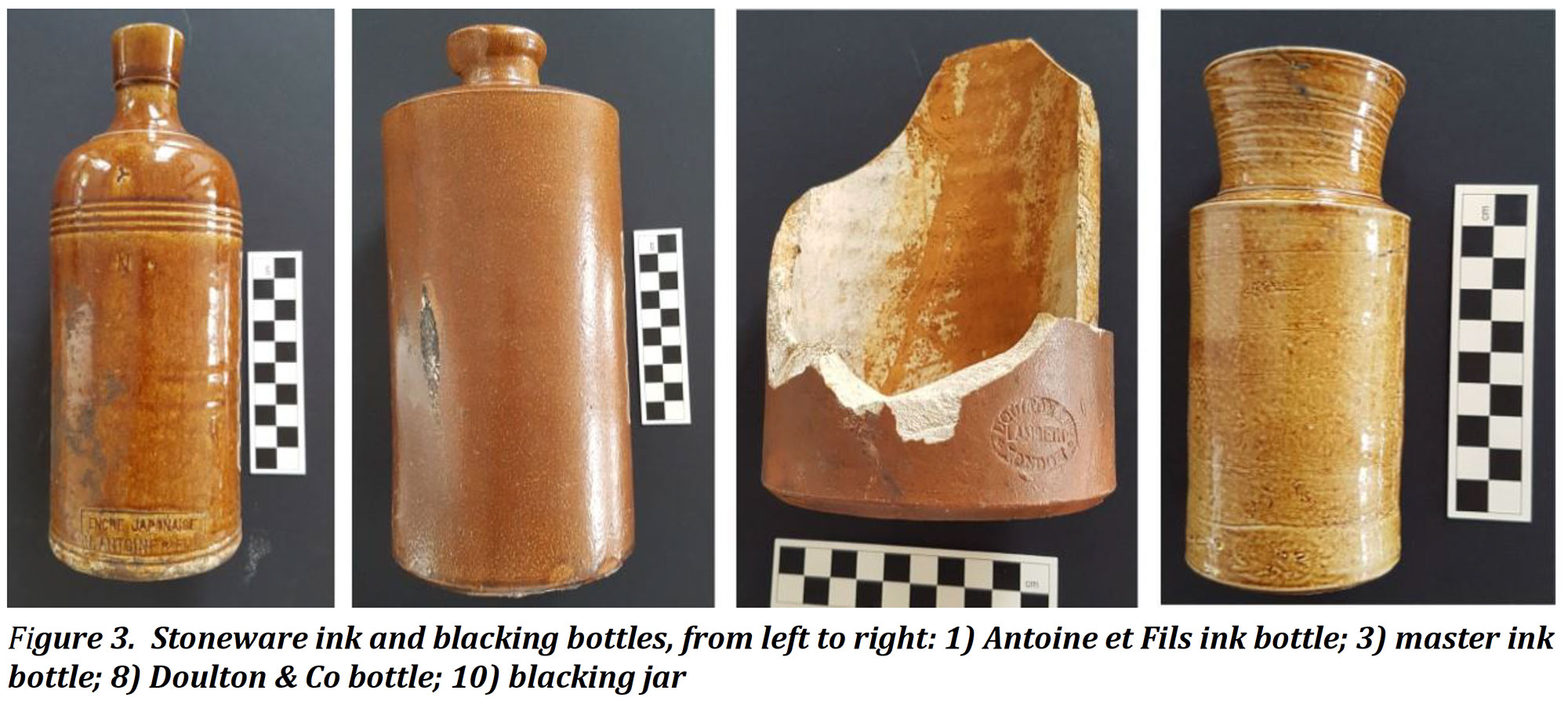
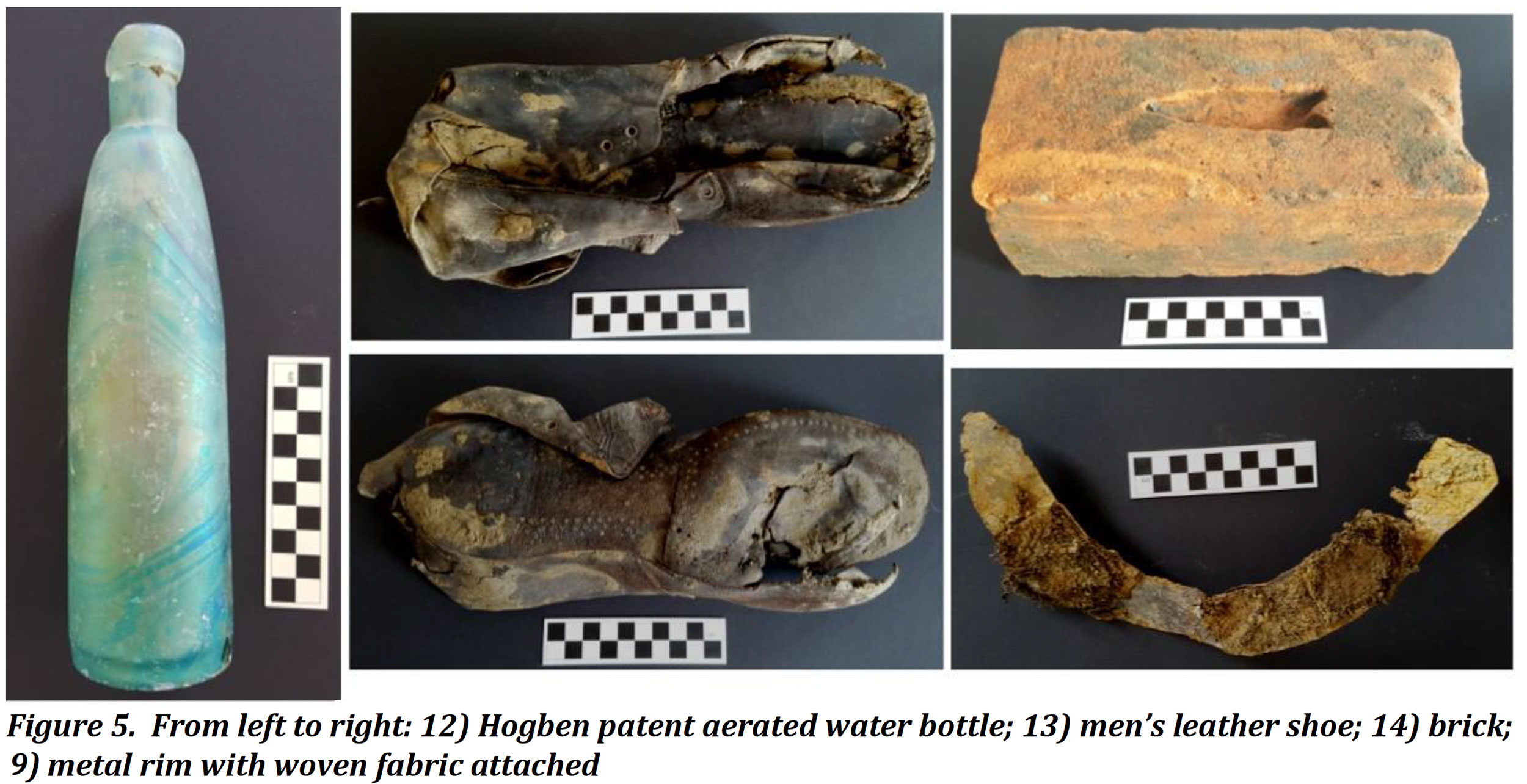
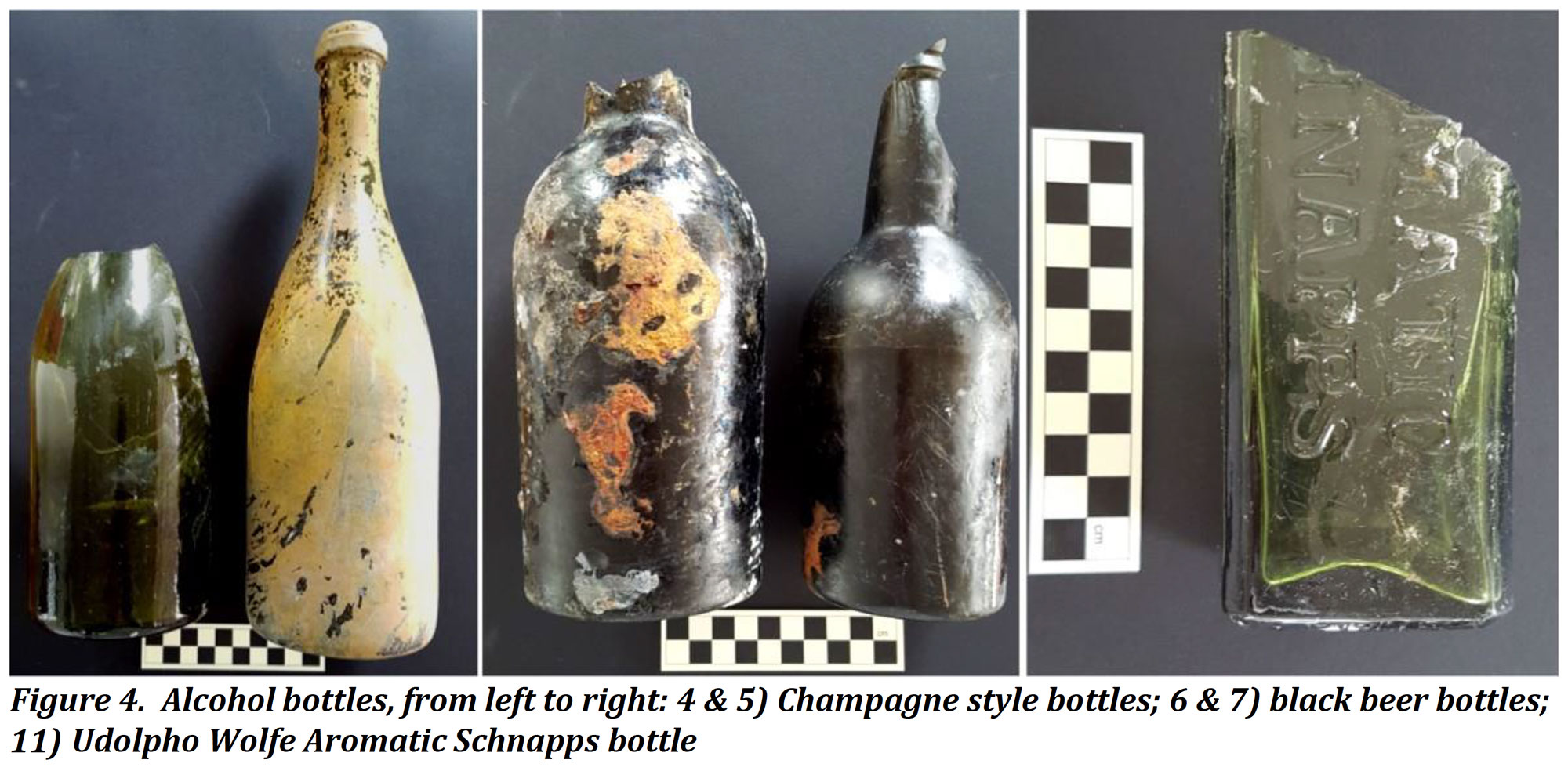
Earlier finds
In February 2018, these interesting archaeological finds were found during excavations around the Waitematā Station (Britomart) Chief Post Office construction site.
The artefacts comprise a small assemblage of complete or mostly complete glass bottles. They include one topless salad oil bottle, one complete condiment/food bottle and one complete medicinal bottle.
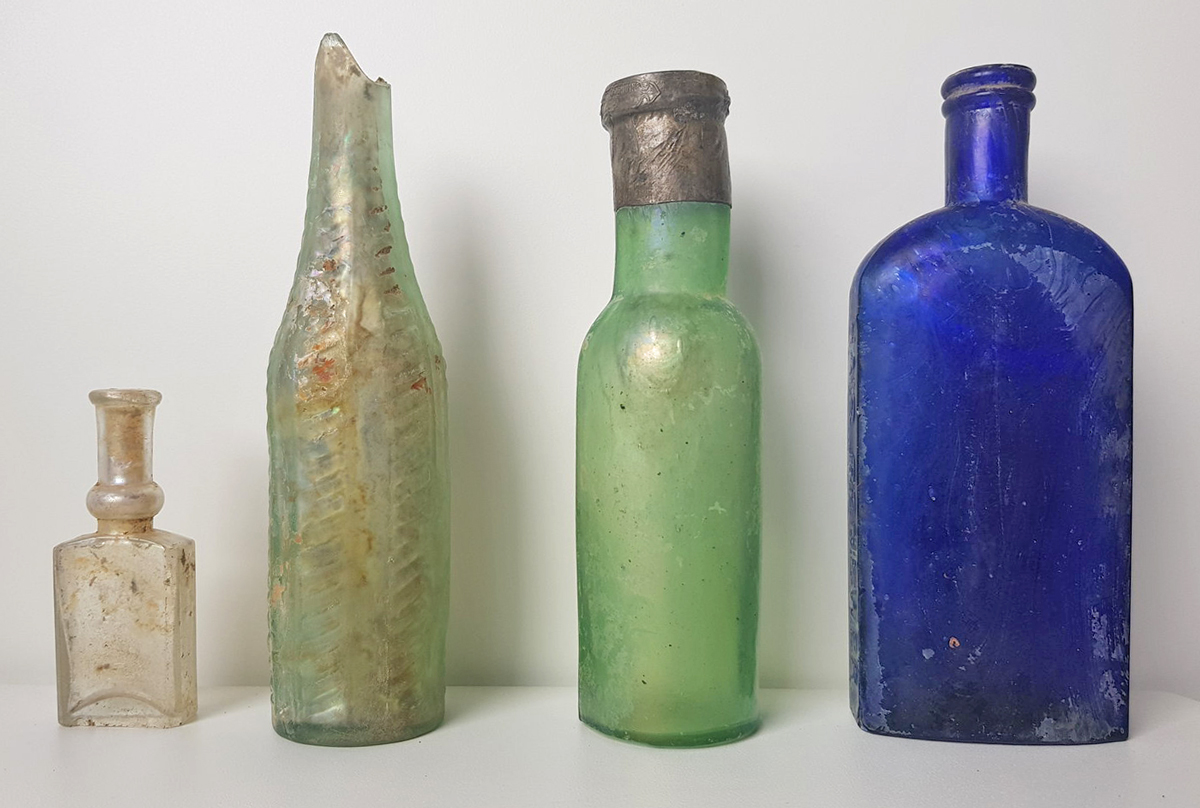
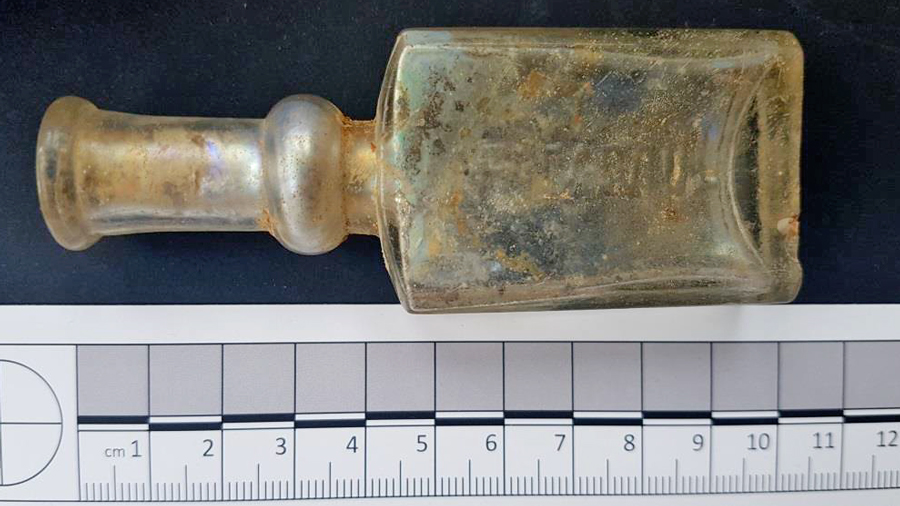
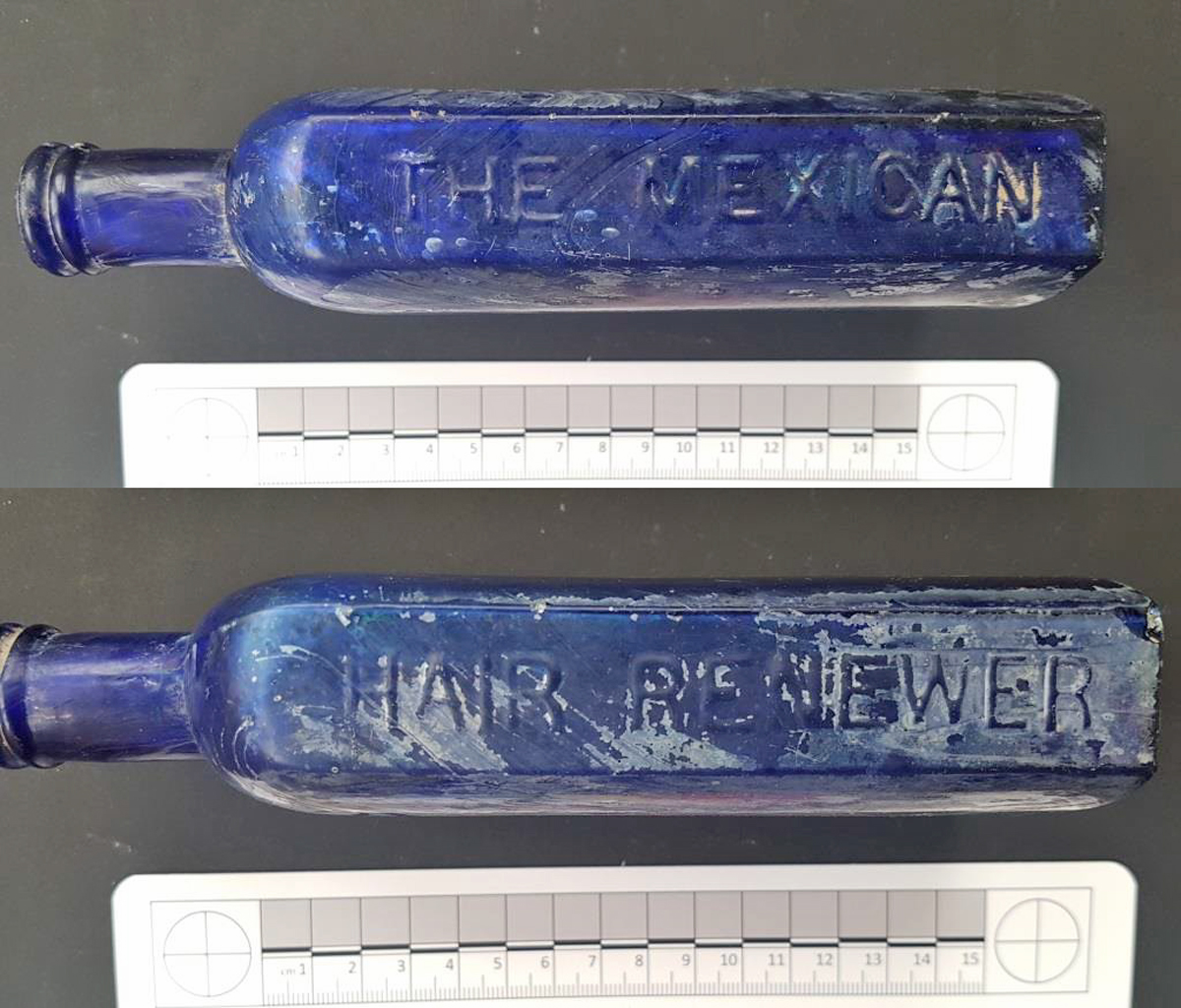

A 91mm-high clear rectangular perfume bottle, embossed with the name Rimmel, dated from the mid to late 19th century. The House of Rimmel is a French perfumery based in London. The company was established in 1834, specialising in perfumes, cosmetics, soaps, bath oils and pomades. Rimmel is still in business today.
A 174mm-high complete aqua green cylindrical condiment/food bottle with the foil still intact around the neck, dated mid to late 19th century.
A decorative 186mm-high aqua-coloured salad oil bottle, dated 1845 to 1910. An identical bottle was recovered in Christchurch with an intact label showing ‘George Whybrow’s Sublime Salad Oil.'
A rectangular 177mm-high cobalt blue medicinal bottle with the side panels embossed with ‘The Mexican’ and ‘Hair Renewer’ and the base with a cross.
The manufacturing technique of the Mexican hair renewer bottle dates it to the late 19th century.
Mexican Hair Renewer was advertised from as early as 1873 until 1920.
Also located was this 450mm-high wooden stake, mostly likely made from an Australian hardwood and used for boxing or similar. The stake has been shaped into a point at the base and has evidence of being sawed off at the top.
The stake appears to have suffered some decay towards the top which suggests exposure to moisture.
CRL archaeologists believe it was likely used in the construction of the CPO, which was completed in 1912. The dimensions are: height 450mm, width 90mm and depth 40mm.
What we found under the historic Waitematā Station (Britomart) Chief Post Office building
In March 2018, a rare historic artefact found 1.5 metres below ground beneath the CPO was a torpedo-shaped bottle from the mid to late 19th century.
It bears the name Pochajee Framjee & Co- a company of shopkeepers and wine merchants in Bombay, India in 1842.
It is considered a rare find in New Zealand.
The ink bottle with a pouring lip is from 1848 to the 1880s.
Stephens ink manufactory operated from 1832 to the mid-20th century and was based at Aldersgate Street London from 1848 to 1880s. As seen below, there is a makers' imprint on the lower body of the bottle saying 'Stephens/Aldersgates/London'.
The bottle and other items were recovered by contractors from reclamation fill beneath the CPO during works close to the south-eastern corner of the building at a depth of c.1.5m below the existing ground surface.
Other recoverable items included a complete stoneware master ink bottle and two broken bottles. All the bottles date to the mid-late 19th century, which fits well with the date of reclamation of this area being 1879-1886.
The bottle still contained a small amount of blue ink which was retained.
Also found were the remains of a wooden scrubbing brush.
There were no bristles remaining. Two iron wood screws were evident at either end. The wire that wove the bristles onto the brush was still present.
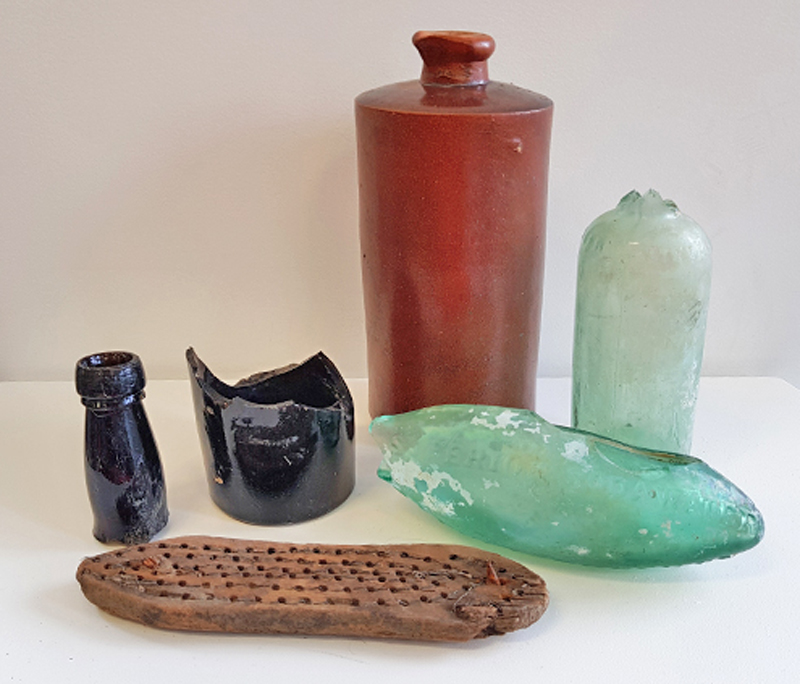
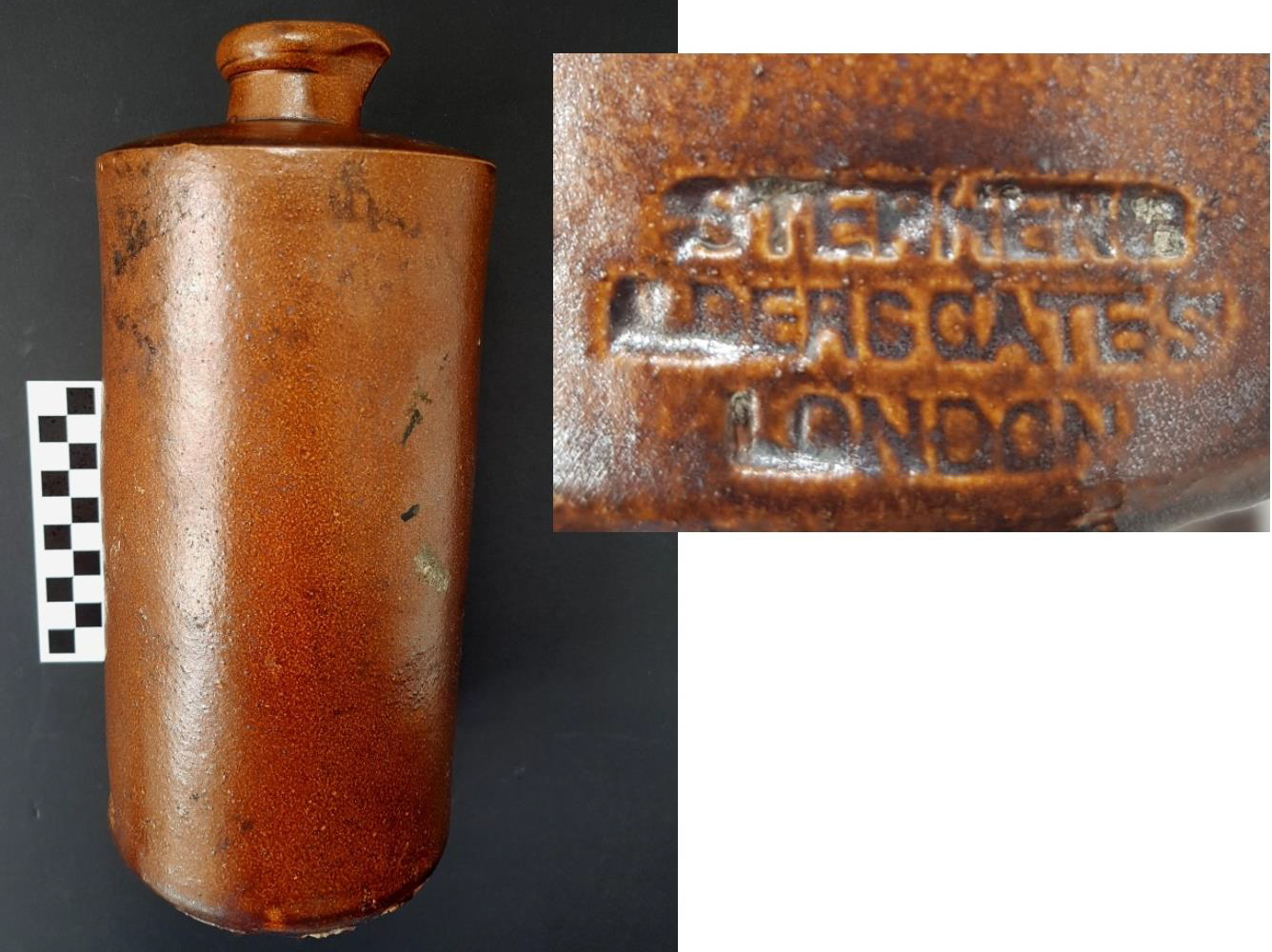
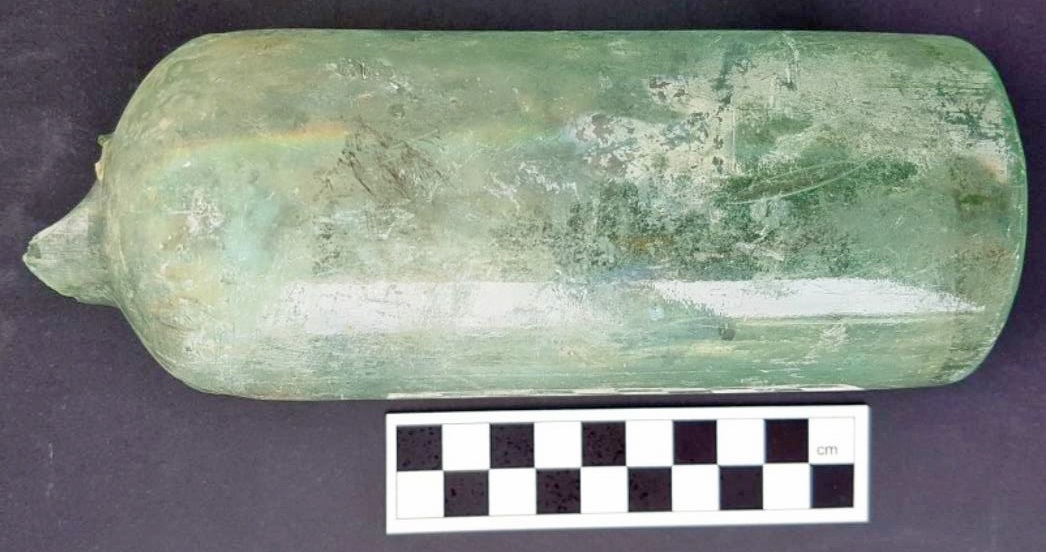
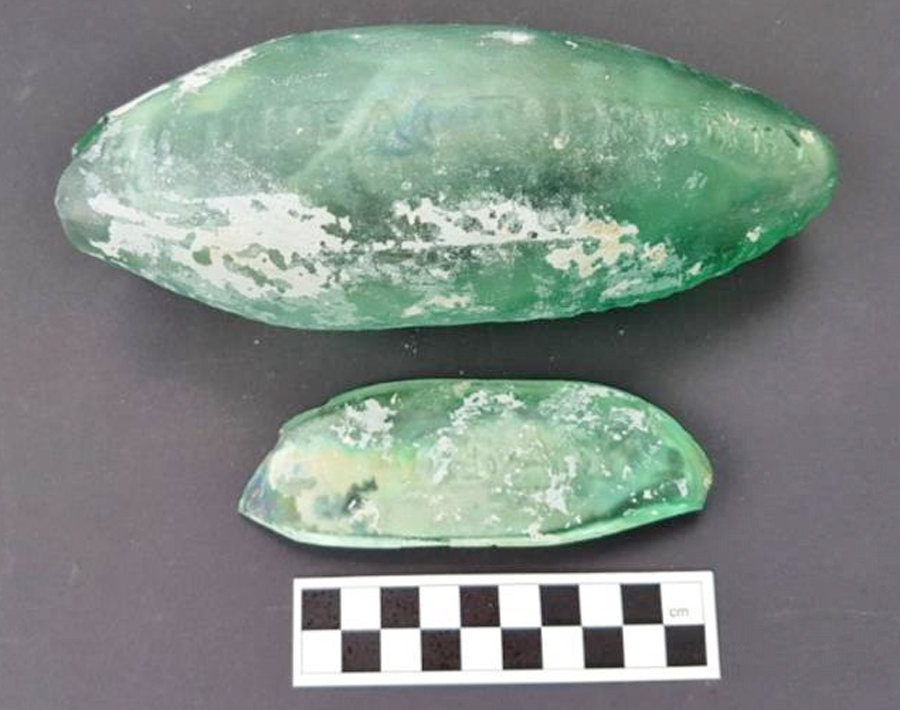
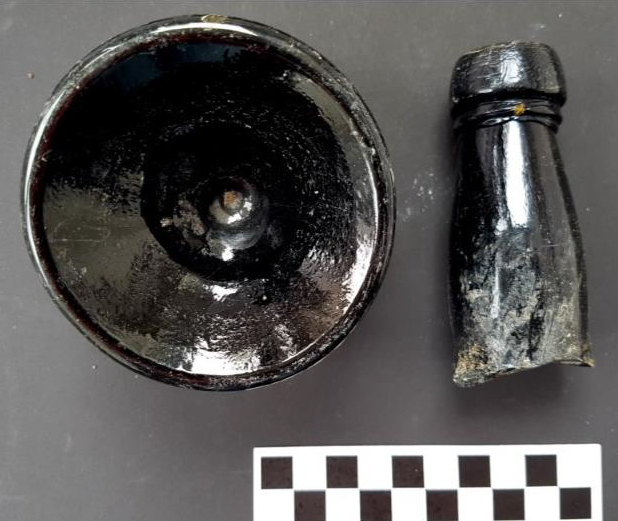
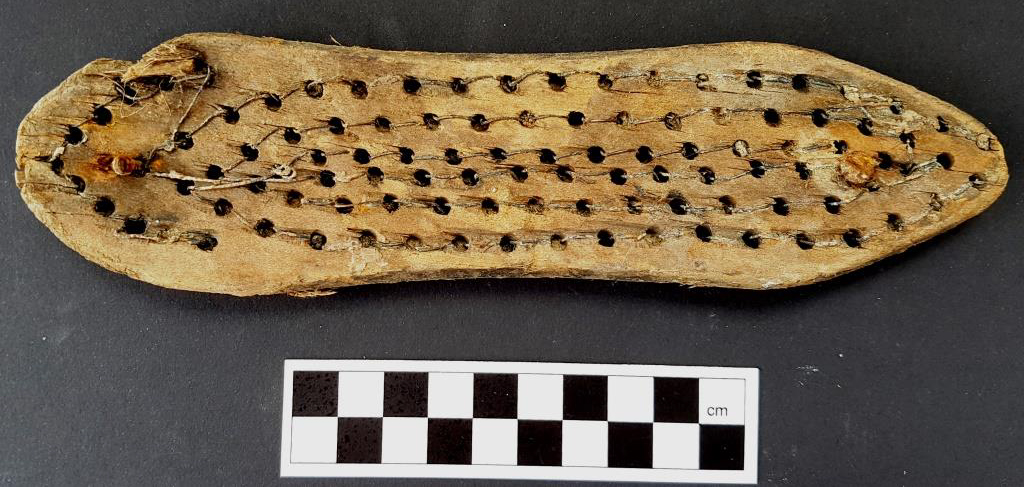
Preserving the Waitematā Station (Britomart) building, the former Chief Post Office
The Waitematā Station (Britomart) building was Auckland’s historic Chief Post Office (CPO) before being re-purposed as a train station.
It's a Category 1 listed heritage building.
Converting Britomart station from a dead-end to a through-station has provided an opportunity to contribute to cultural sustainability.
The project was about conserving the built heritage of the historic Chief Post Office (CPO) as well as literally digging into the area's past.
Construction teams worked meticulously, in association with Heritage NZ, to make sure the heritage aspects of the interior were not impacted by the work needed to modify the building from a dead-end to a through station.
Most of Britomart was underwater until the 1870s. It is now on reclaimed land in the middle of what was once Commercial Bay.
EARLY DAYS: Commercial Bay and Shortland Street in 1841 (Image: Sir George Grey Special Collections, Auckland Libraries, 4-9089)
HERITAGE: The CPO building - now Waitematā Station (Britomart ) was opened in 1912 (Photo: Sir George Grey Special Collections, Auckland Libraries, 1-W1533)
During the CRL construction, the original features of the Chief Post Office building, such as the pillars, ceiling and skylights, were protectively wrapped, and the entire building monitored by the cyclops system to ensure no excessive movement occurred as the building was underpinned and the tunnels built.
NZ Herald 5 July 1948
Preserving and fixing the historic CPO clock
The historic clock of the former Chief Post Office building was removed to be fixed by a specialist clock repairer in Auckland.
The clock was not an original feature of the CPO.
Costing 321 pounds and 10 shillings, the dual-faced Magneta clock was added to the Lower Queen Street facade on 4 July 1938. The Auckland Star newspaper at the time heralded it as a "handsome addition to Auckland's timepiecess" and said it would be seen quite a distance in Queen Street.
The NZ Herald published this photo of the clock being installed.
National Library records show that the clock didn't work initially "owing to the hands being out of balance and to the failure of the mechanism to synchronise with that of numerous other small clocks on the same electrically controlled system throughout the CPO building."
Unfortunately over the years, the clock didn't prove to be the most reliable of time-keepers, often displaying the wrong time or stopping working altogether. In recent years, this was much to the frustration of people rushing to catch a train.
The clock was removed for an internal makeover and reinstated at the completion of the CRL construction works at Britomart Station.
Found during the Albert Street excavation
Early excavations on Albert Street unearthed some of Auckland’s early utilities, providing a glimpse into how infrastructure was built in the past.
The answer, it seems, is with brick.
DISCOVERED: Disused brick barrel drain in the CRL construction shaft in Victoria Street looking southeast. (Photo: Clough & Associates Ltd.)
The most interesting piece of infrastructure unearthed is a disused brick barrel drain found while excavating the construction shaft on Victoria Street to bore a new stormwater main.
When a cross-section was cut it was found that the drain had been constructed using two layers of brick to form an inverted egg shape measuring 500mm wide by 730mm tall. This shape was favoured by Victorian drainlayers as it is strong, self-cleaning (because of the relatively high flow speed at low volumes), and requires a smaller excavation width than a circular drain, which was important when being dug by hand!
Perhaps unsurprisingly it appears that the amount of excavation which was undertaken to construct the drain appears to be the least amount possible, with only 50mm of disturbed earth on either side. This is an approach modern drainlayers could do well to emulate as it reduces the amount of diesel, and associated greenhouse gases, needed to excavate and transport spoil and backfill.
Judging by the type of bricks used, and its location, the archaeologist believes the drain was probably installed around the same time as the Albert Street main drain and therefore dates after 1864/65. This would put its construction around 25 years after the signing of the Treaty of Waitangi and the European settlement of Auckland, a time when the city’s population was approximately 12,000.
























